The allure of outdoor cooking has always been a staple in the hearts of food enthusiasts around the world. As technology advances and consumer tastes evolve, the landscape of kitchen appliances has expanded to cater to these changing preferences. Among these innovations, stainless steel contact grills have emerged as a favorite among both casual cooks and professional chefs alike. Their sleek design, durability, and the promise of perfectly grilled food have made them a staple in European and American kitchens. This article delves into the key features and benefits of these grills, the market trends shaping their popularity, the latest design and technological innovations, and how they compare to traditional grilling methods. We’ll also explore the pivotal role stainless steel plays in professional kitchens and the challenges and opportunities that lie ahead in this dynamic market. Additionally, we’ll uncover consumer insights and offer a glimpse into the future outlook for stainless steel contact grills.
Introduction to Stainless Steel Contact Grills
Stainless steel contact grills have emerged as a popular choice in the culinary world, offering a sleek and efficient way to cook a variety of dishes. These grills are designed with a flat top and bottom that come together to cook food directly, eliminating the need for flipping or turning, which makes them a favorite among busy chefs and home cooks alike.
The construction of stainless steel contact grills is what sets them apart. The use of high-quality stainless steel not only adds to the grill’s durability but also contributes to its aesthetic appeal. The sleek, metallic finish is not only visually pleasing but also resistant to rust and corrosion, ensuring a long lifespan even in high-heat environments.
These grills are renowned for their even heat distribution, which is crucial for achieving perfectly grilled marks and a consistent cook throughout. The ability to sear food quickly and efficiently is a significant advantage, as it locks in the natural flavors and juices, resulting in mouthwatering dishes.
One of the standout features of stainless steel contact grills is their versatility. Whether you’re grilling steaks, chicken, vegetables, or seafood, these grills can handle a wide range of foods and cooking techniques. The flat surfaces allow for a variety of cooking methods, including direct grilling, steaming, and even baking, making them a versatile addition to any kitchen.
Modern stainless steel contact grills often come equipped with a variety of heat settings, allowing users to control the cooking temperature to suit different types of food and desired outcomes. Some models even include non-stick coatings to make cleanup a breeze and reduce the need for cooking oil or spray.
In Europe and America, the demand for stainless steel contact grills has been steadily growing. This can be attributed to several factors, including the convenience they offer, the health benefits of grilling without the need for excessive oil, and the ability to create restaurant-quality dishes at home.
Consumers in these regions are increasingly health-conscious, and stainless steel contact grills align perfectly with this trend. The grilling process allows for the natural fat to render off the food, resulting in lower calorie dishes that are still satisfying. This is particularly appealing to those looking for ways to enjoy their favorite grilled meals without the guilt.
Additionally, the ease of use and the clean cooking surface are major selling points. The lack of open flames also makes these grills a safer option, especially in homes with children or pets.
Design-wise, stainless steel contact grills have seen significant advancements. The latest models feature innovative designs that not only enhance cooking performance but also make the grills more user-friendly. For instance, many grills now come with built-in temperature controls, digital displays, and even Wi-Fi connectivity for remote monitoring and control.
Comparatively, stainless steel contact grills offer distinct advantages over traditional grilling methods. While traditional charcoal or gas grills require more time and attention to maintain the heat, contact grills do the work for you. They eliminate the need for tending to the fire, allowing you to focus on other tasks or spend more time with your guests.
In professional kitchens, stainless steel contact grills have become a staple. Their durability, efficiency, and ability to handle high volumes of food make them ideal for busy restaurants and commercial kitchens. The consistent results and ease of cleaning also contribute to their popularity among chefs.
Despite their many benefits, the market for stainless steel contact grills is not without its challenges. High-quality materials and advanced technology come with a price tag, which can deter some consumers. Additionally, the learning curve for some features, like the temperature controls, can be a barrier for those unfamiliar with the latest kitchen appliances.
Looking ahead, the future of stainless steel contact grills appears promising. As health consciousness continues to rise, and as technology advances, we can expect to see even more innovative features and designs that cater to the evolving needs of consumers. From improved non-stick coatings to smart technology integration, the next generation of contact grills is likely to be more user-friendly and versatile than ever before.
In conclusion, stainless steel contact grills have earned their place as a favorite among grill enthusiasts and professional chefs. Their durability, versatility, and health benefits make them a compelling choice for anyone looking to enhance their grilling experience. With continued innovation and market demand, these grills are poised to remain a key player in the culinary appliance landscape.
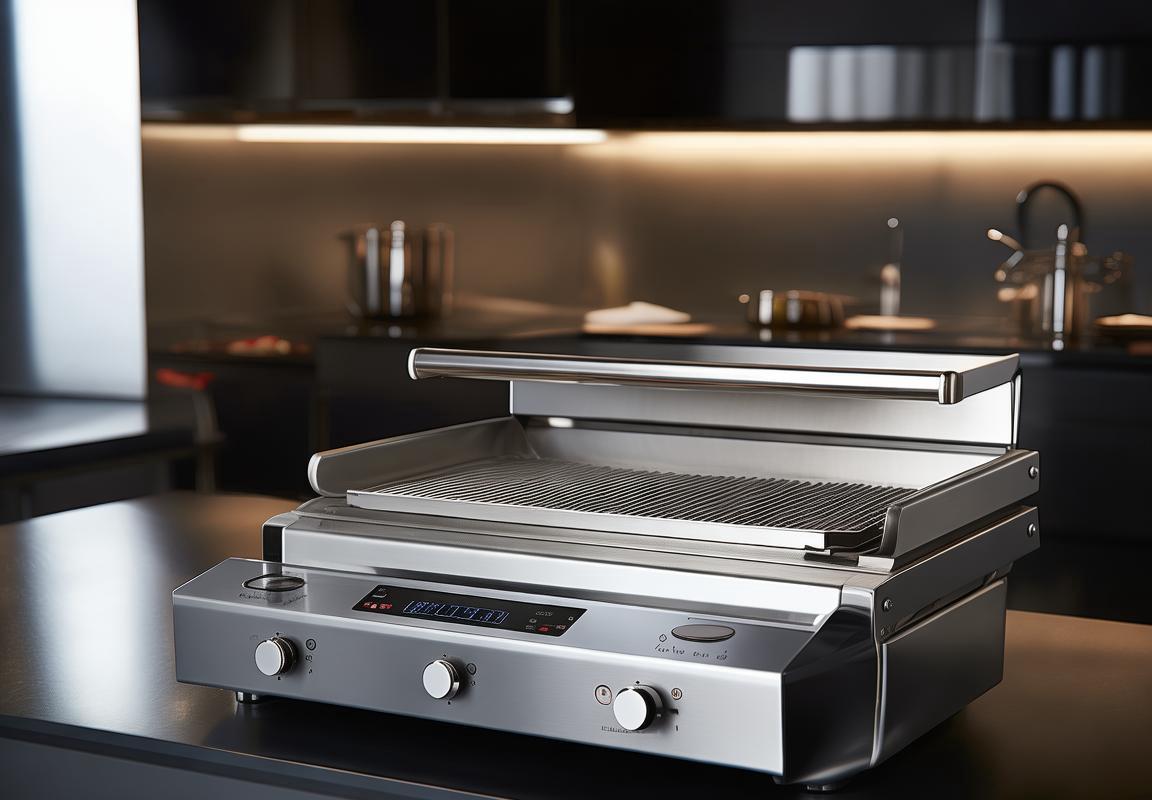
The Rise of Stainless Steel Grills in Europe and America
The European and American markets have witnessed a remarkable surge in the popularity of stainless steel contact grills. This trend is not merely a fleeting fashion but a testament to the evolving preferences of consumers who are increasingly seeking high-quality, durable, and efficient kitchen appliances.
The rise of stainless steel grills can be attributed to several factors. First and foremost, the material’s inherent qualities play a significant role. Stainless steel is renowned for its corrosion resistance, making it an ideal choice for outdoor cooking. The non-reactive nature of stainless steel also means that food will not absorb any flavors or odors from the grill, ensuring that the taste of the meal is pure and undiluted.
Moreover, the aesthetic appeal of stainless steel grills cannot be overstated. The sleek, modern design of these grills complements a variety of kitchen decors, from contemporary to rustic, making them a versatile addition to any outdoor space. This visual appeal is particularly important in Europe, where the trend for outdoor living and al fresco dining has been growing steadily.
In America, the barbecue culture is deeply rooted in the social fabric, and stainless steel grills have become a staple in many households. The durability of stainless steel ensures that these grills can withstand the test of time, year after year, without losing their shine or structural integrity. This longevity is a significant draw for consumers looking for a long-term investment in their outdoor kitchen equipment.
Another factor contributing to the rise of stainless steel grills is the advancement in cooking technology. Modern grills equipped with stainless steel construction offer precise temperature control, allowing for the perfect sear and grill marks that are so coveted in today’s culinary landscape. Features like adjustable heat zones, digital controls, and programmable settings have further enhanced the convenience and versatility of these appliances.
In Europe, the emphasis on healthy cooking methods has also played a role in the popularity of stainless steel contact grills. These grills provide an alternative to traditional methods that can require more oil, making them a healthier option. The ability to cook with minimal oil is a significant advantage for consumers who are conscious about their diet and the impact of their cooking on their health.
The integration of smart technology in stainless steel grills has been a game-changer. With the introduction of Bluetooth connectivity and smartphone apps, users can now monitor their grills remotely, adjust temperatures, and even preheat the grill using their mobile devices. This level of connectivity and control has resonated well with tech-savvy consumers who appreciate the fusion of technology and traditional cooking methods.
The environmental consciousness among consumers has also influenced the market for stainless steel grills. These grills are often made from recycled stainless steel, which appeals to eco-friendly consumers. The longevity of stainless steel means that these grills contribute to a lower carbon footprint over their lifetime compared to grills made from other materials that require frequent replacement.
As the market continues to grow, manufacturers are responding with an array of innovative features. From built-in thermometers and timers to infrared cooking capabilities, the options are vast and varied. This has created a competitive landscape where manufacturers must continuously innovate to capture market share.
The rise of stainless steel grills in Europe and America is not just a trend; it’s a reflection of the changing priorities and lifestyles of consumers. As they seek appliances that offer durability, convenience, and health benefits, stainless steel contact grills have become the go-to choice for many. The future looks bright for this category, with more innovations on the horizon that promise to further solidify its place in the hearts and kitchens of grill enthusiasts worldwide.
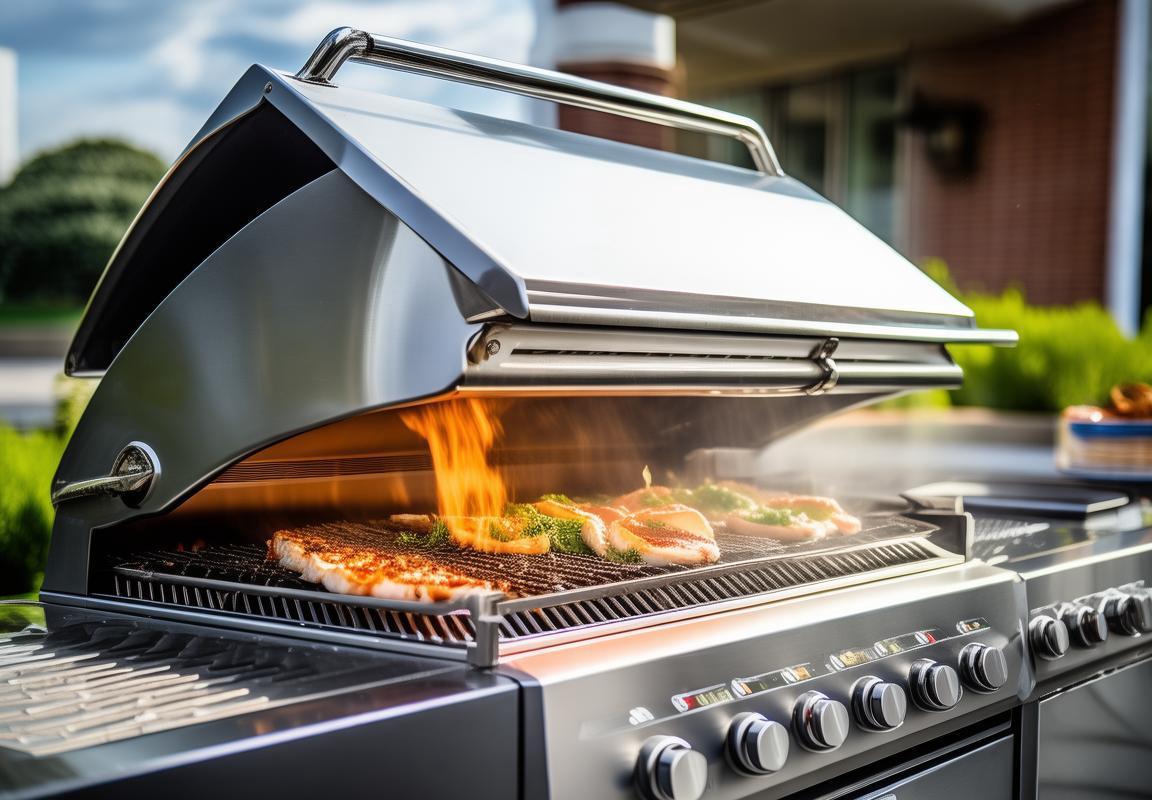
Key Features and Benefits of Stainless Steel Contact Grills
Stainless steel contact grills have emerged as a favorite among grill enthusiasts and professional chefs alike, thanks to their array of features and undeniable benefits. Here’s a closer look at what makes these grills stand out:
The sleek and durable design of stainless steel contact grills is a standout feature. The material not only offers a sophisticated look but also ensures that the grill can withstand the rigors of high heat and frequent use. Its resistance to rust and corrosion means that these grills maintain their shine and structural integrity over time, making them a long-term investment for any kitchen.
One of the most appealing aspects of stainless steel contact grills is their even heat distribution. The high-quality steel material ensures that heat is evenly spread across the cooking surface, minimizing hot spots and providing a consistent cooking experience. This even distribution is crucial for searing meats and ensuring that every bite is perfectly cooked.
The non-stick surfaces found on many stainless steel contact grills are a game-changer for both health and convenience. With less need for oil or butter, these grills help reduce the fat content of your meals, contributing to healthier eating habits. Additionally, the non-stick properties make for easier cleaning, as food residue is less likely to stick to the surface.
The ease of use is another benefit that has propelled stainless steel contact grills to popularity. Many models come with features like adjustable heat controls and removable cooking surfaces for easy cleaning. The sleek design also means that these grills are space-efficient, making them ideal for small kitchens or outdoor cooking spaces where space is at a premium.
Safety is a top priority for any kitchen appliance, and stainless steel contact grills do not disappoint. The sturdy construction and lack of harmful chemicals or coatings mean that these grills are safe for use and provide peace of mind. Additionally, the even heat distribution reduces the risk of food burning or charring, which can be dangerous for both the eater and the cook.
In terms of versatility, stainless steel contact grills are a hit. They can handle a variety of foods, from lean proteins like chicken and fish to hearty meats like beef and lamb. The ability to sear proteins to a perfect crust while keeping the inside tender is a testament to the grill’s performance. Vegetables also benefit from the grill’s ability to caramelize and enhance flavors.
Another key feature is the portability of some stainless steel contact grills. Compact and lightweight, these grills are perfect for camping trips, tailgating, or outdoor entertaining. They can be easily transported and set up almost anywhere, offering the convenience of grilled meals on the go.
Durability is a hallmark of stainless steel contact grills. The material’s inherent strength means that these grills can withstand the occasional drop or spill without damage. This resilience is particularly important for families or individuals who prefer to grill year-round, regardless of weather conditions.
Maintenance is also a breeze with stainless steel contact grills. The non-porous nature of the material makes them resistant to bacteria growth, and a simple wipe-down with soap and water is typically all that’s needed to keep them clean. This low maintenance aspect is a significant factor in the longevity of these grills.
Lastly, the aesthetic appeal of stainless steel contact grills cannot be overstated. The timeless, modern look of stainless steel complements any kitchen decor, whether it’s traditional or contemporary. This versatility in style adds to the grills’ appeal, making them not just a functional appliance but also a stylish addition to any cooking space.
In summary, the key features and benefits of stainless steel contact grills—such as their durability, even heat distribution, non-stick surfaces, ease of use, safety, versatility, portability, low maintenance, and aesthetic appeal—have contributed to their rise in popularity across Europe and America. Whether in the hands of a professional chef or a home cook, these grills are a reliable choice for achieving perfect grill marks and delicious flavors every time.
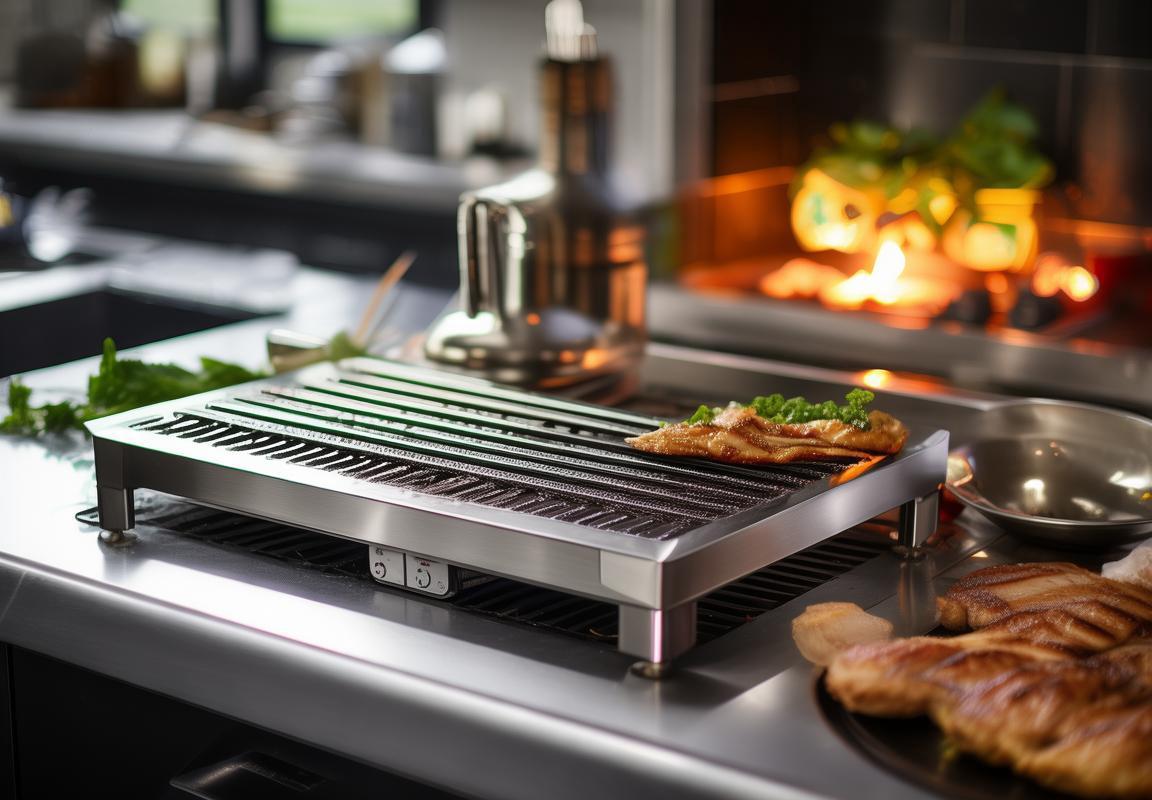
Market Trends and Consumer Preferences
In recent years, the market for stainless steel contact grills has seen a significant surge, driven by a variety of trends and evolving consumer preferences. This segment of the kitchen appliance industry has been shaped by several key factors, each playing a role in the growth and popularity of these grills.
-
The demand for convenience has surged as modern lifestyles become increasingly fast-paced. Contact grills offer a quick and easy way to cook a variety of foods, making them a favorite among busy professionals and families alike.
-
Health-conscious consumers are gravitating towards contact grills due to their ability to cook food with less oil, which can reduce the fat content. This focus on healthy eating has propelled the sales of these grills, especially in urban areas where health trends are closely followed.
-
The emphasis on outdoor living and entertaining has also contributed to the popularity of contact grills. With more people looking to create a backyard barbecue experience, these compact grills are perfect for patios and decks, offering a versatile cooking solution.
-
The rise of gourmet food culture has brought about a demand for high-quality, professional-grade kitchen appliances. Stainless steel contact grills, with their sleek design and durable materials, cater to this market segment, appealing to those who appreciate the finer details of cooking.
-
Smart technology integration is becoming a norm in kitchen appliances, and contact grills are no exception. New models often come with features like temperature control, timers, and even Bluetooth connectivity, which allow users to monitor and control their cooking process remotely.
-
The preference for stainless steel as a material is not just about aesthetics; it’s also about practicality. Stainless steel is non-reactive, easy to clean, and resistant to corrosion, making it a top choice for durability and longevity.
-
The growing trend of home cooking and meal prepping has also played a role in the success of contact grills. As more individuals seek to take control of their diet and cooking, these grills offer a convenient option for quick and healthy meals without the need for outdoor space.
-
The availability of a wide range of accessories and attachments has expanded the functionality of contact grills. From grill plates with different surfaces to attachments for smoking or searing, these add-ons cater to a diverse set of cooking needs and preferences.
-
The influence of social media and cooking shows has not gone unnoticed in the market for contact grills. With chefs and influencers often showcasing their culinary skills using these appliances, it has created a buzz and generated interest among the general public.
-
The sustainability movement has also had an impact on consumer preferences. Stainless steel is recyclable, and its longevity means fewer appliances end up in landfills, aligning with the values of environmentally conscious consumers.
-
The market for contact grills has seen a shift towards eco-friendly manufacturing processes. Companies are increasingly focusing on reducing their carbon footprint and using sustainable materials, which is resonating with consumers who prioritize environmental responsibility.
-
The trend of multi-functional kitchen appliances continues to grow, and contact grills are no longer just for cooking burgers. Users are exploring them for a variety of dishes, from vegetables to fish, and even pancakes, which has broadened their appeal.
-
The rise of health and wellness influencers has encouraged the adoption of contact grills, as these appliances are often seen as a way to achieve a balanced diet without sacrificing taste or convenience.
-
The convenience of cleaning and maintaining stainless steel contact grills is a significant factor in their popularity. Unlike traditional grills, which require more effort to clean and store, these appliances are designed with ease of maintenance in mind.
-
Lastly, the competitive pricing of stainless steel contact grills has made them accessible to a wider audience. As prices have become more competitive, these grills are now more affordable, which has helped drive sales and solidify their place in the kitchen.
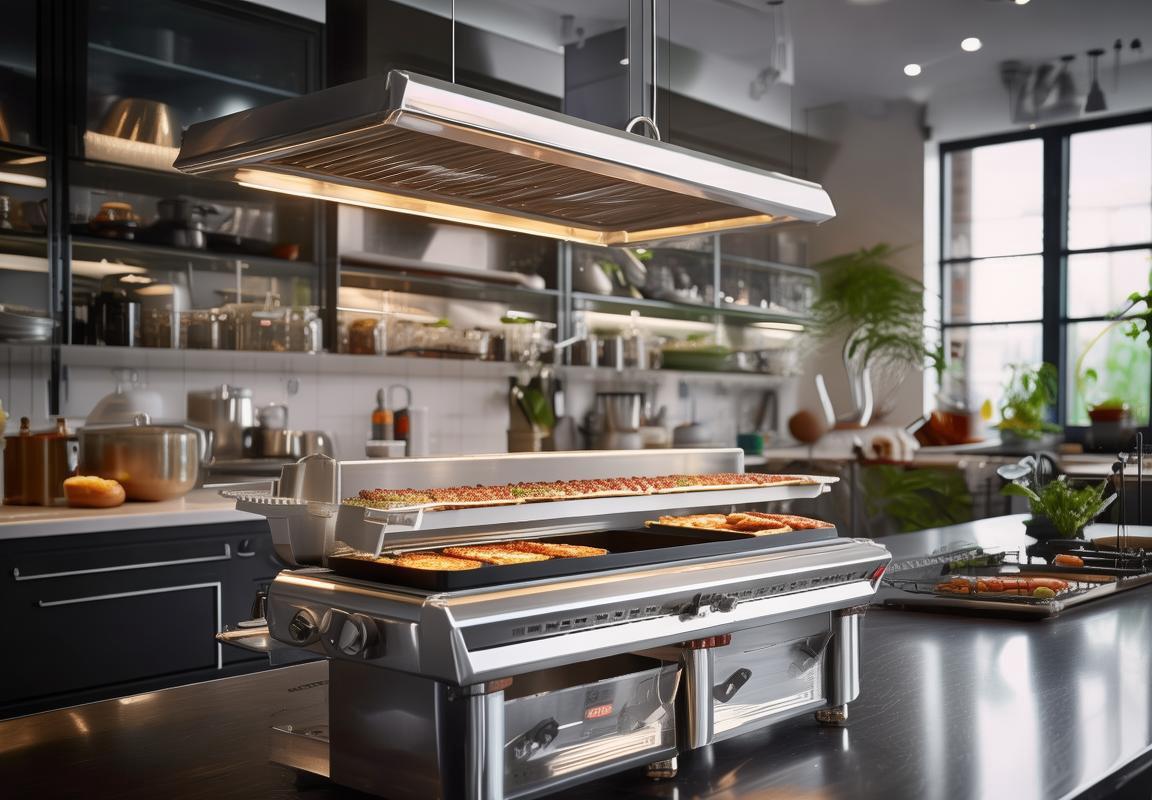
Innovations in Design and Technology
The evolution of kitchen appliances has been marked by constant innovation, and the realm of grilling is no exception. Over the years, manufacturers have pushed the boundaries of design and technology, especially in the realm of stainless steel contact grills. Here’s a glimpse into some of the latest innovations that have captured the market’s attention:
Grill Surface TechnologyOne of the standout innovations in stainless steel contact grills is the advancement in grill surface technology. Modern grills now feature non-stick coatings that reduce the need for excessive oil, making cooking healthier and easier. These coatings are durable and resistant to scratching, ensuring that the grill surface maintains its performance over time.
Smart Control SystemsGone are the days of guesswork when it comes to grilling temperatures. Modern stainless steel contact grills are equipped with smart control systems that allow for precise temperature regulation. Users can set specific temperatures and the grill will maintain them consistently, ensuring that food is cooked to perfection without the risk of burning.
Integrated Searing PlatesMany high-end stainless steel contact grills now come with integrated searing plates. These plates provide a high-heat zone that locks in the juices and creates a perfect sear on meats, giving the food a restaurant-quality finish. This feature is particularly popular among grill enthusiasts who appreciate the ability to achieve a professional-grade sear at home.
Temperature ZonesIn response to the diverse needs of consumers, some grills now offer multiple temperature zones. This allows for different types of cooking on the same surface, such as grilling at high temperatures for searing and then lowering the heat for slow cooking. The ability to adjust temperature zones makes these grills versatile and suitable for a wide range of recipes.
Built-In Slicers and Meat MeltersFor those who prefer convenience, the integration of built-in slicers and meat melters is a game-changer. These features allow users to slice and tenderize meat directly on the grill, reducing the need for pre-cooking preparation. It’s a time-saving innovation that adds a touch of convenience to the grilling experience.
Air Fry TechnologyThe incorporation of air fry technology in stainless steel contact grills is a significant development. This feature enables users to cook with little to no oil, reducing the fat content and calories in the food. It’s an attractive selling point for health-conscious consumers looking for a healthier grilling option.
Eco-Friendly MaterialsAs sustainability becomes a key concern for consumers, manufacturers are responding with eco-friendly designs. Stainless steel grills are not only durable but also recyclable, making them a more environmentally responsible choice. Some brands are also using recycled materials in their packaging and components, further enhancing their green credentials.
Wi-Fi ConnectivityIn the age of smart homes, it’s no surprise that kitchen appliances are becoming smarter. Many stainless steel contact grills now offer Wi-Fi connectivity, allowing users to control their grill remotely through their smartphones or tablets. This feature is particularly useful for those who want to start grilling while still at work or for those who want to monitor their grill while entertaining guests.
Safety FeaturesSafety has always been a priority in kitchen appliance design, and modern stainless steel contact grills come with a range of safety features. These include cool-touch handles, child safety locks, and automatic shut-off functions to prevent overheating. These innovations provide peace of mind to users, knowing that their safety and that of their loved ones is a top priority.
Customizable Cooking SettingsFor those who enjoy customization, some grills offer a range of cooking settings that can be adjusted to suit individual preferences. From different types of searing to specific temperature settings for different meats, these grills cater to a wide array of culinary tastes and cooking techniques.
In conclusion, the innovations in design and technology for stainless steel contact grills continue to push the boundaries of what’s possible in home grilling. From smart features that enhance convenience and control to eco-friendly designs that align with consumer values, these advancements are shaping the future of outdoor cooking.
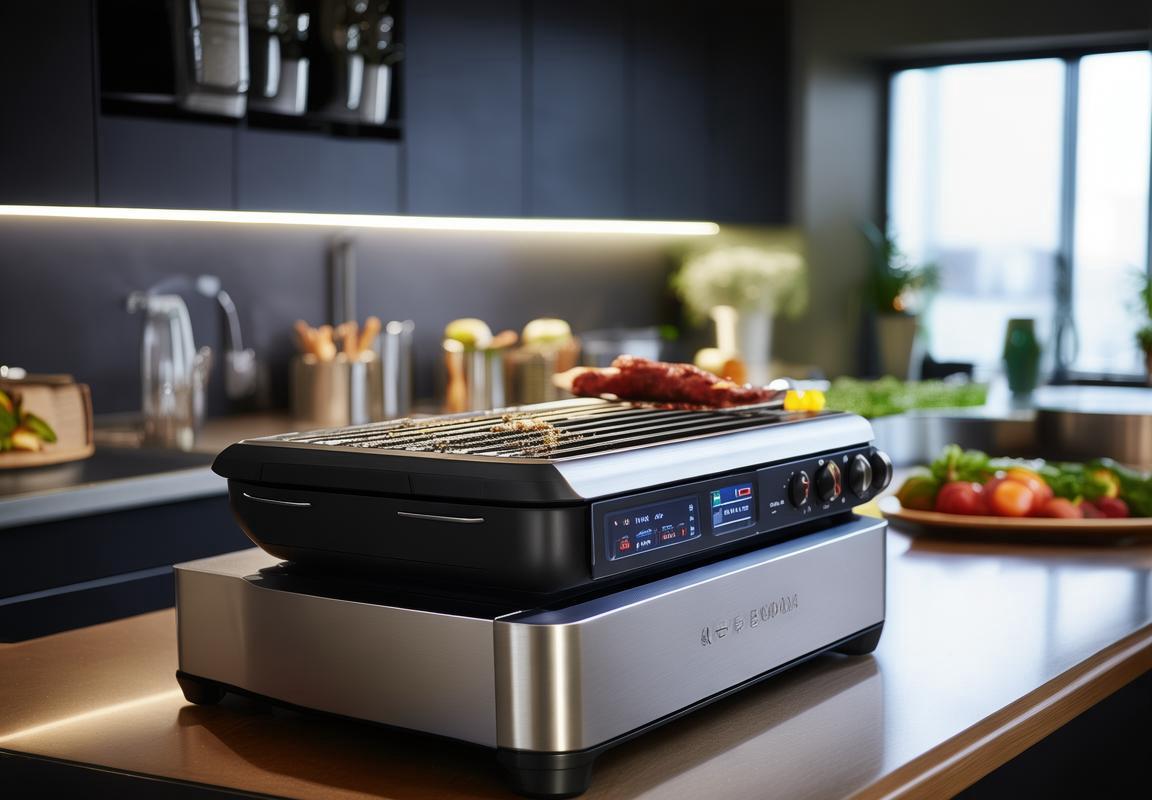
Comparison with Traditional Grilling Methods
In recent years, the grilling landscape has been revolutionized by the introduction of stainless steel contact grills. These sleek appliances offer a unique grilling experience, blending the convenience of indoor cooking with the allure of outdoor flavors. When comparing stainless steel contact grills to traditional grilling methods, several key differences emerge, each with its own set of advantages and challenges.
One of the most apparent distinctions is the heat distribution. Traditional grilling methods, such as charcoal or gas grills, rely on direct heat from flames or burners. This can lead to uneven cooking temperatures, as well as the risk of burning or charring food. Stainless steel contact grills, on the other hand, use a flat, heated surface that evenly distributes heat across the entire surface. This not only ensures consistent cooking but also reduces the likelihood of overcooking or undercooking certain parts of the food.
The surface design of a stainless steel contact grill is another differentiator. These grills typically have a smooth, flat top that makes it easy to maneuver food during cooking. In contrast, traditional grills often feature a ridged or grooved surface that can be more challenging to use, particularly when flipping or moving food. The flat surface of contact grills also makes it easier to achieve that perfect grill mark that is so sought after in traditional grilling.
Another advantage of stainless steel contact grills is the speed of cooking. Traditional grilling methods can be time-consuming, especially when it comes to preheating and managing the grill’s temperature. Contact grills, however, heat up quickly and maintain a consistent temperature, which means you can cook a meal in a fraction of the time it would take on a traditional grill.
Despite these benefits, traditional grilling still holds a special place in many hearts. There’s something inherently appealing about the smoky flavor imparted by charcoal or the rustic charm of a gas grill. Additionally, traditional grilling often offers a more interactive experience, with friends and family gathered around the grill, enjoying the process as much as the result.
One significant difference between the two is the cooking surface itself. Traditional grills, whether gas or charcoal, provide a direct heat source, which can lead to a deeper, more pronounced flavor due to the Maillard reaction. Stainless steel contact grills, while still capable of developing a flavorful crust, might not achieve the same level of smokiness or char as traditional methods.
Moreover, the cooking technique also plays a role in the final outcome. Traditional grilling allows for a greater degree of control over the cooking process, with the ability to adjust the heat source and the distance from the flame. This can be particularly beneficial for cooking delicate foods like fish or vegetables. Contact grills, while still versatile, may not offer the same level of precision.
In terms of maintenance, stainless steel contact grills often have an edge. They are designed to be easy to clean, with smooth surfaces that prevent food particles from sticking and crevices where bacteria can hide. Traditional grills, especially charcoal models, can be more challenging to clean, and the residual ash from charcoal grills can leave a lingering smell and taste.
The debate between stainless steel contact grills and traditional grilling methods also extends to the cooking surface. Contact grills often use non-stick coatings or surfaces, which make them safer for cooking delicate ingredients and reduce the need for excessive oil. In contrast, traditional grills might require the use of oil to prevent sticking and to enhance the flavor.
Lastly, the convenience factor cannot be overlooked. Contact grills are generally easier to store and transport, and they can be used indoors, making them a practical choice for those with limited outdoor space or those who prefer not to cook outdoors. Traditional grills, while often larger and more cumbersome, offer the option for outdoor cooking, which many find to be an essential part of the grilling experience.
In conclusion, the choice between stainless steel contact grills and traditional grilling methods often boils down to personal preference and the type of cooking experience one is looking for. While contact grills provide convenience, speed, and even heat distribution, traditional grilling offers a unique flavor profile and a communal experience. Whether you’re a seasoned grill master or a culinary novice, the right method will depend on what you value most in your grilling adventure.
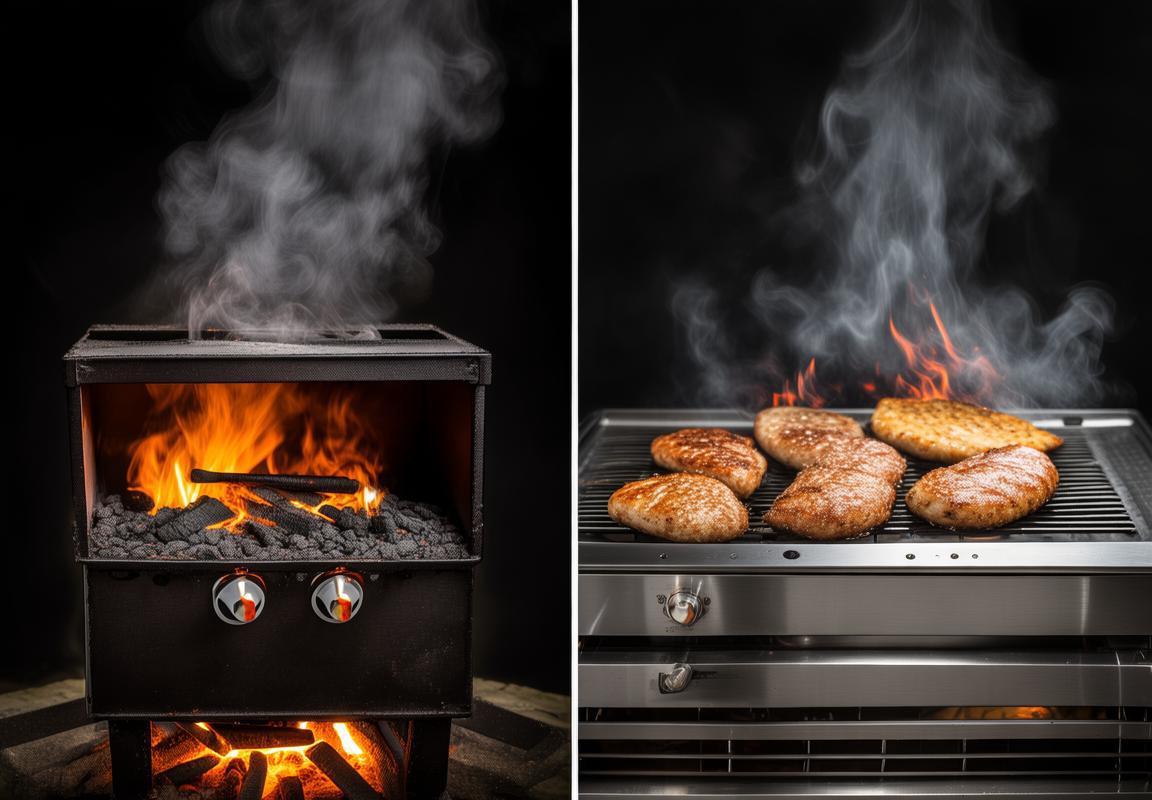
The Role of Stainless Steel in Professional Kitchens
Stainless steel has long been a staple in the world of professional kitchens, offering a durable and hygienic solution for a variety of culinary applications. Its role is multifaceted, from the prep station to the cooking surface, and its presence is felt in every aspect of commercial kitchen design. Here’s a closer look at how stainless steel shapes the professional kitchen landscape:
In the heart of the professional kitchen, stainless steel is the unsung hero. Countertops, sinks, and backsplashes are often crafted from this material, providing a robust surface that can withstand the rigors of daily use. Its non-porous nature prevents bacteria from adhering, making it an ideal choice for maintaining cleanliness and preventing cross-contamination.
When it comes to cooking equipment, stainless steel’s thermal conductivity is unparalleled. It heats up quickly and evenly, which is crucial for searing meats and ensuring that every dish is cooked to perfection. Appliances like commercial grills, ovens, and steamers are often made with stainless steel components, not just for their heat retention but also for their sleek and modern appearance.
The durability of stainless steel is another key factor in professional kitchens. It’s resistant to corrosion, meaning that it can withstand the harsh environment of a commercial kitchen without losing its shine or structural integrity. This longevity is particularly important in a business where every dollar counts, as stainless steel equipment can last for decades with proper maintenance.
Hygiene is paramount in professional kitchens, and stainless steel plays a vital role in maintaining a clean and safe environment. Its smooth surface makes it easy to clean, and it doesn’t harbor bacteria like some other materials might. This is especially critical in areas where food is prepared, served, and consumed, as it helps to prevent foodborne illnesses.
The aesthetic appeal of stainless steel is also a significant factor in its popularity in professional kitchens. Its sleek, modern look is often associated with cleanliness and efficiency, which is exactly what chefs and restaurant owners are looking for. It’s a material that can elevate the look of a kitchen, making it more inviting to both staff and patrons.
In terms of design, stainless steel allows for a modular approach to kitchen layout. It can be configured in various ways to accommodate different kitchen needs, from small cafes to large commercial kitchens. This flexibility is essential for creating a workspace that is both functional and visually appealing.
Another advantage of stainless steel is its ability to be customized. It can be polished, brushed, or even embossed to achieve different finishes, allowing for a unique aesthetic that reflects the identity of the establishment. This level of customization is not just about looks; it also helps to ensure that the kitchen equipment matches the brand’s image and the chef’s culinary vision.
Stainless steel is also a sustainable choice for professional kitchens. It’s recyclable, which means that at the end of its long service life, it can be repurposed into new products, reducing waste and the environmental impact. This eco-friendly aspect is increasingly important to both businesses and consumers who are conscious of their carbon footprint.
In the realm of innovation, stainless steel continues to evolve. Advances in surface treatments and coatings have made it even more resistant to stains and corrosion, extending the life of kitchen equipment even further. Additionally, new technologies are being integrated into stainless steel appliances, such as self-cleaning ovens and smart cooking surfaces that can adjust heat levels based on the type of food being prepared.
In conclusion, stainless steel is not just a material in professional kitchens; it’s a cornerstone of the industry. Its durability, hygienic properties, aesthetic appeal, and versatility make it an indispensable element in the design and operation of modern commercial kitchens. As the culinary world continues to evolve, stainless steel will undoubtedly remain a key player, shaping the future of professional kitchen design and efficiency.
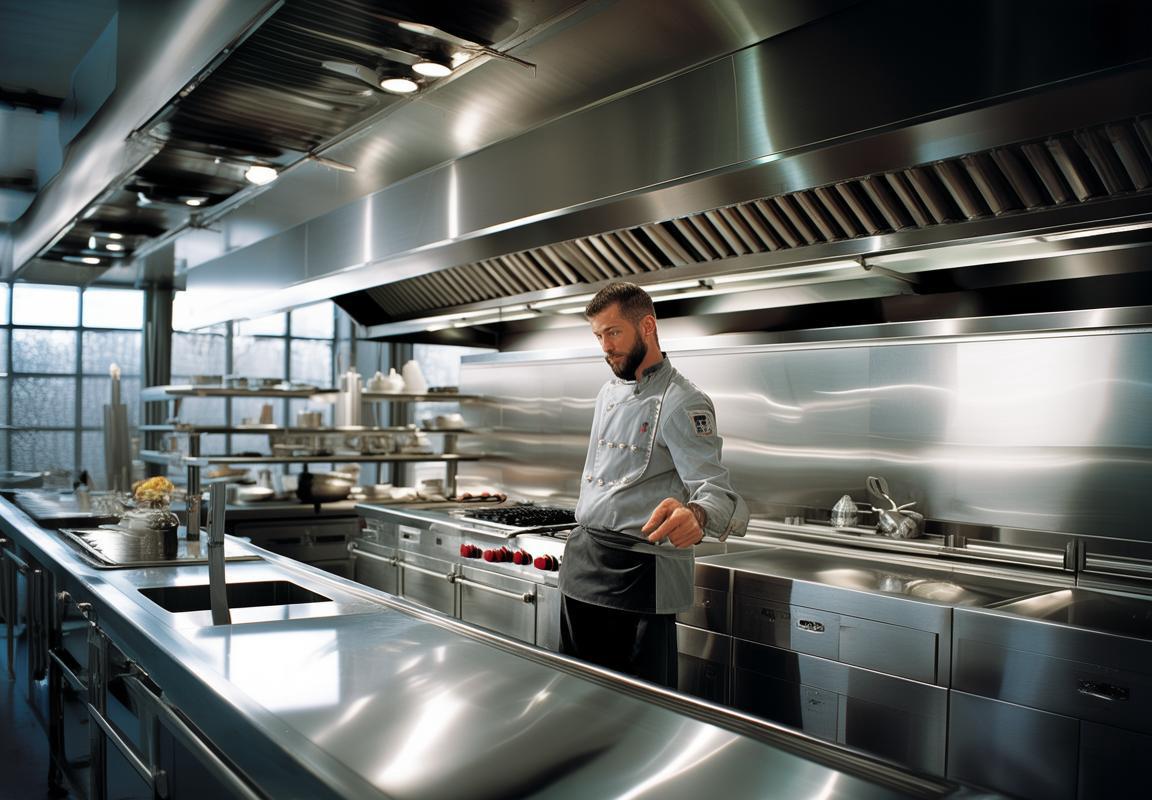
Challenges and Opportunities in the Market
In recent years, the has experienced a surge in innovation, with stainless steel contact grills emerging as a favorite among consumers. However, navigating the challenges and opportunities within this dynamic sector is crucial for both manufacturers and consumers alike.
The demand for efficient and high-quality kitchen appliances has led to a rise in the use of stainless steel in contact grills. This material is not only durable and easy to clean but also offers a sleek and modern aesthetic that appeals to many. Despite its popularity, the market faces several challenges and opportunities that are shaping its future.
One of the main challenges is the need for manufacturers to balance cost and quality. As stainless steel contact grills become more mainstream, there’s a risk of cheaper, lower-quality versions flooding the market, which could tarnish the reputation of established brands. Consumers, on the other hand, must be wary of investing in subpar products that may not live up to expectations.
Opportunities arise from the evolving consumer preferences that are driving the market. Health-conscious consumers are increasingly seeking out cooking methods that minimize the use of oil, and stainless steel contact grills are perfectly suited for this. Additionally, the convenience of these grills, with their ability to cook food quickly and evenly, is attractive to busy individuals and families.
The integration of smart technology is another opportunity that could redefine the market. Grills with built-in sensors and digital controls allow for precise temperature management and cooking times, which can be tailored to the specific type of food being prepared. This level of customization can significantly enhance the user experience and potentially set new standards in the industry.
Moreover, the sustainability movement has opened up opportunities for manufacturers to explore eco-friendly materials and manufacturing processes. While stainless steel is a recyclable material, there’s room for innovation in reducing the carbon footprint associated with the production and distribution of these grills.
The challenge lies in the complexity of supply chains and the variability of global raw material prices. Fluctuations in the cost of stainless steel can impact the pricing and availability of contact grills, making it difficult for manufacturers to maintain consistent product quality and pricing strategies.
Another challenge is the competition from alternative cooking methods, such as induction cooktops and infrared ovens, which are also gaining popularity. To stay relevant, manufacturers must continuously innovate and offer unique selling propositions that differentiate their products from the competition.
The market also faces regulatory challenges. As appliances become more sophisticated, there’s an increased need for compliance with safety standards and certifications. Ensuring that all products meet these requirements without compromising on design and functionality is a delicate balance that manufacturers must navigate.
Despite these challenges, there are significant opportunities for growth. The global kitchen appliance market is expected to grow significantly over the next few years, driven by factors such as urbanization, changing lifestyles, and rising disposable incomes. This growth presents a chance for manufacturers to expand their market share and introduce new products that cater to the evolving needs of consumers.
Additionally, the rise of e-commerce has made it easier for consumers to discover and purchase stainless steel contact grills. This shift in consumer behavior has opened up new markets and created opportunities for manufacturers to reach a broader audience.
In conclusion, the market for stainless steel contact grills is fraught with challenges and opportunities. By focusing on quality, innovation, and sustainability, manufacturers can overcome obstacles and capitalize on the growing demand for high-quality kitchen appliances. Consumers, too, can benefit from the continuous improvement in technology and design that these appliances offer.
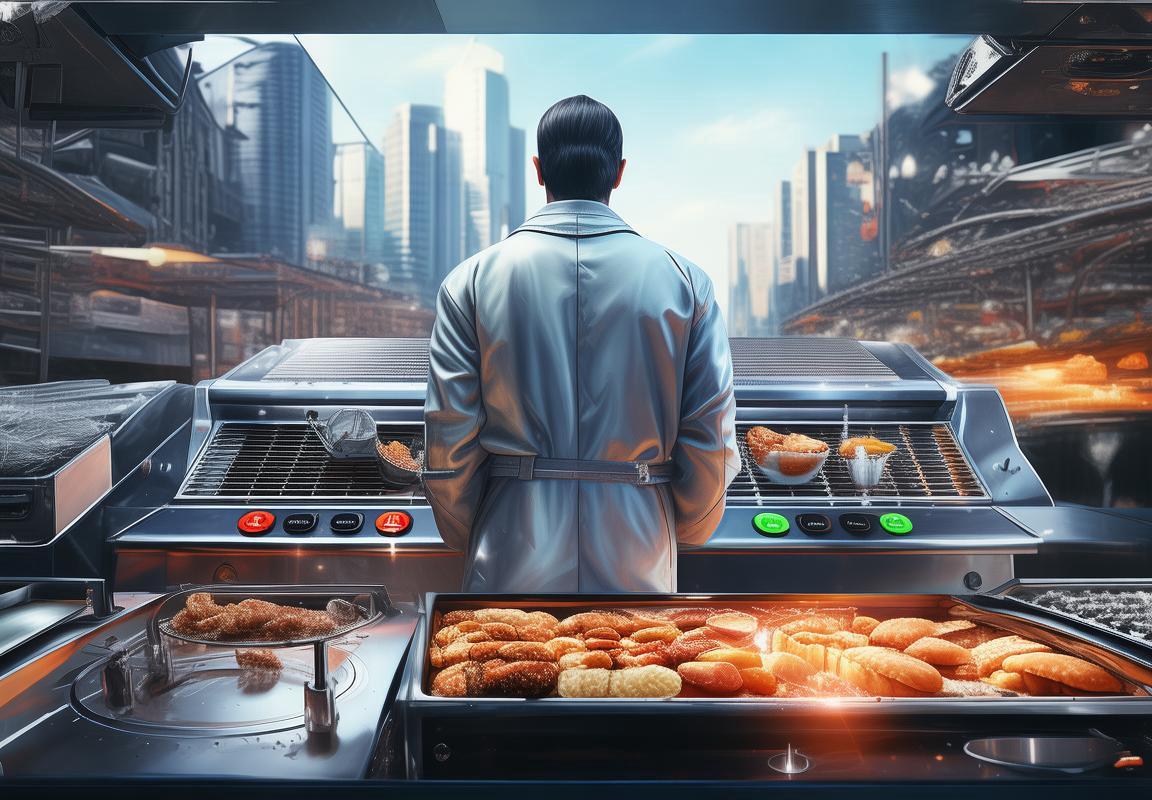
Consumer Insights and Future Outlook
The evolving preferences of consumers have sparked a revolution in the kitchen appliance industry, with insights revealing a shift towards healthier, more efficient, and technologically advanced products. As we delve into the future outlook, it’s clear that innovation and consumer needs are closely intertwined. Smart appliances, sustainability, and personalized experiences are shaping the landscape of tomorrow’s kitchens. Here’s a glimpse into the consumer insights and the future outlook for kitchen appliances.
Modern consumers are increasingly health-conscious, leading to a surge in demand for appliances that support healthier cooking methods. From air fryers that reduce oil usage to steam ovens that preserve nutrients, these insights indicate a market trend towards healthier options. As a result, manufacturers are investing in research and development to create appliances that cater to this growing segment.
Technology has become a central part of daily life, and the kitchen is no exception. Smart appliances that integrate with home automation systems are becoming more popular. Consumers are drawn to features like voice control, remote monitoring, and predictive maintenance, which not only enhance convenience but also provide peace of mind. The future will likely see even more sophisticated integrations that seamlessly blend kitchen appliances with other smart devices.
Customization and personalization are also key drivers in consumer preferences. Users are looking for appliances that can be tailored to their specific needs and preferences. This could mean adjustable settings on ovens, or a range of cooking modes on coffee makers. As manufacturers respond to this demand, we can expect to see a rise in customizable appliances that offer a more personalized cooking experience.
Energy efficiency remains a critical concern for consumers, particularly as climate change and rising energy costs become more pronounced. Appliances that consume less energy and are designed with sustainability in mind are not only eco-friendly but also cost-effective in the long run. This trend is expected to continue, with manufacturers focusing on energy-efficient designs that align with green living principles.
The rise of the digital kitchen has led to a greater emphasis on connectivity. Consumers are interested in appliances that can be controlled via mobile apps, allowing them to manage their kitchen from anywhere. This connectivity extends beyond convenience; it also enables data-driven insights that can improve cooking performance and energy use.
Another significant trend is the blurring lines between kitchen appliances and home entertainment. Smart appliances that can display recipes, streaming services, or even provide educational content are becoming more common. This convergence of technology suggests that future kitchens may not just be a place for cooking but also for entertainment and learning.
The future of kitchen appliances also hinges on the global shift towards sustainability. As consumers become more aware of their environmental impact, there’s a growing preference for appliances made with sustainable materials and designed for longevity. This not only reduces waste but also aligns with the values of a circular economy.
Innovation in materials is another area that’s poised to change the landscape of kitchen appliances. Advanced materials that are durable, easy to clean, and resistant to corrosion are being explored. These materials could lead to appliances that are not only functional but also aesthetically pleasing and easy to maintain.
The integration of artificial intelligence (AI) into kitchen appliances is also a trend worth watching. From AI-powered ovens that adjust cooking times and temperatures based on the type of food being prepared to refrigerators that can suggest meal ideas based on stored ingredients, AI has the potential to revolutionize how we interact with our kitchen appliances.
Lastly, the future of kitchen appliances will be shaped by the evolving needs of different demographics. For instance, as the population ages, there will be a greater demand for appliances that are easy to use and provide assistance in meal preparation. This could include appliances with larger, more visible controls or voice-activated features that cater to the needs of older adults.
In conclusion, consumer insights point to a future where kitchen appliances are more integrated into our daily lives, offering health, convenience, and sustainability. As technology continues to advance, the kitchen will become a hub of innovation, reflecting the evolving preferences and values of consumers around the world.
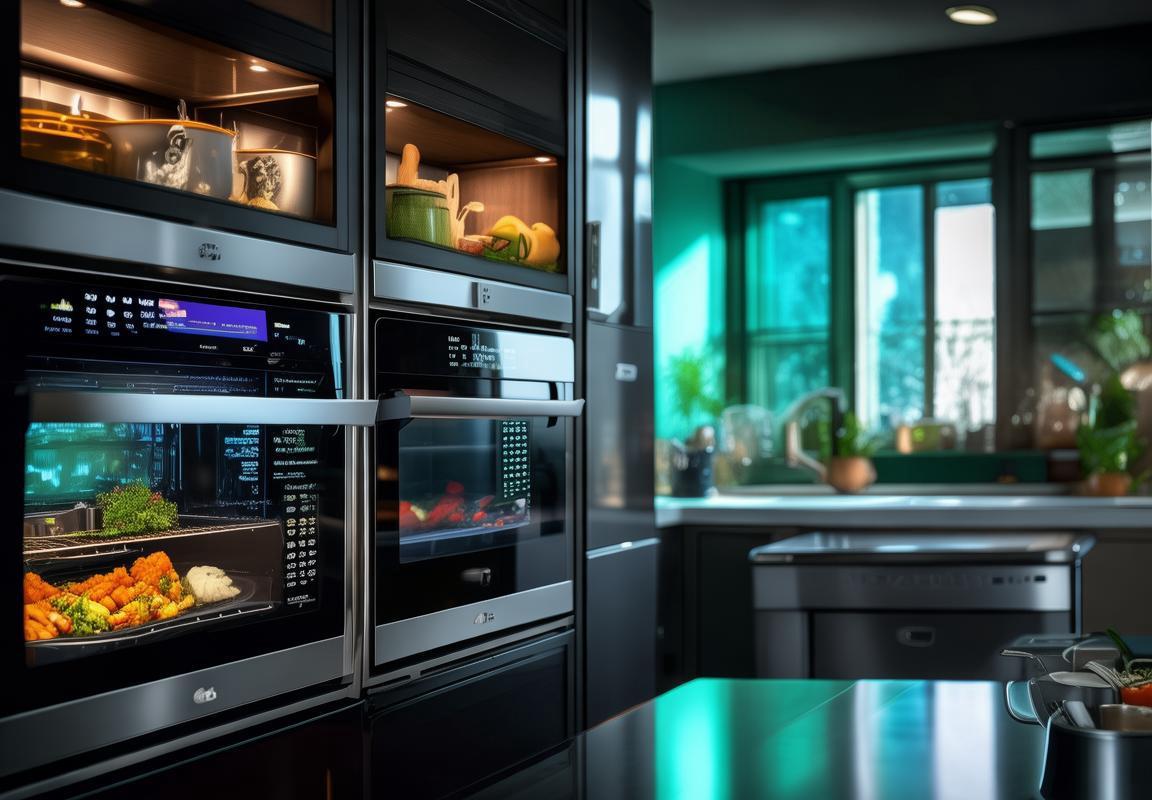
Conclusion: The Enduring Appeal of Stainless Steel Contact Grills
The enduring appeal of stainless steel contact grills lies in their versatility, durability, and the culinary excellence they bring to the table. These appliances have transcended their initial role as simple kitchen gadgets to become integral components of modern cooking. Here’s a closer look at what makes them so captivating.
Grills have evolved from their traditional charcoal and gas counterparts, offering a sleek, maintenance-free alternative. Their stainless steel construction not only enhances their aesthetic appeal but also ensures longevity and resistance to rust and corrosion. The material’s non-stick properties also mean less cleaning and more time for cooking.
In the realm of convenience, stainless steel contact grills shine. Their compact design and ease of use make them a favorite among busy homeowners and culinary enthusiasts alike. The ability to cook a variety of foods, from delicate sandwiches to hearty steaks, all on one surface, is a testament to their versatility. This convenience factor has played a significant role in their popularity.
Safety is another key aspect that has contributed to the enduring appeal of stainless steel contact grills. With features like adjustable heat settings and temperature controls, users can enjoy a safe cooking experience, reducing the risk of burns and overcooking. The even heat distribution also ensures that food is cooked to perfection without the need for constant monitoring.
In terms of health, these grills offer a healthier option compared to traditional grilling methods. The direct contact with the surface prevents the dripping of fats and oils, which can lead to the formation of harmful compounds when burned. This not only makes for a healthier meal but also reduces the amount of fat absorbed by the food.
The integration of technology has further boosted the appeal of stainless steel contact grills. Smart features like digital displays, programmable settings, and Bluetooth connectivity have made these appliances more user-friendly and interactive. Users can now control their grill remotely, adjust temperatures, and even receive notifications about cooking times and progress.
As we delve into the world of consumer preferences, it’s clear that the demand for stainless steel contact grills is driven by a desire for high-quality, efficient, and stylish kitchen appliances. Consumers are increasingly looking for appliances that not only perform well but also complement their kitchen decor. The sleek design and polished finish of stainless steel grills cater to this aesthetic preference.
The market for stainless steel contact grills has also been influenced by the growing trend towards outdoor cooking and entertaining. With more people spending time in their gardens and patios, the need for portable and easy-to-use grilling solutions has surged. The durability and ease of cleaning of these grills make them perfect for outdoor use, adding to their appeal.
Despite the many advantages, the market for stainless steel contact grills is not without its challenges. Competition from other types of grills, such as infrared and ceramic, continues to grow. Manufacturers must innovate and differentiate their products to maintain a competitive edge. Additionally, the cost of stainless steel has fluctuated, which can impact pricing and consumer affordability.
However, opportunities for growth remain abundant. The health and wellness trend is likely to drive demand as consumers seek out healthier cooking methods. The rise of smart home technology also presents a chance for manufacturers to integrate new features that cater to the tech-savvy consumer. Furthermore, as the world becomes more environmentally conscious, the energy-efficient nature of contact grills may become a selling point.
In the future, we can expect to see continued innovation in the design and technology of stainless steel contact grills. The integration of AI and machine learning could lead to grills that not only cook food but also learn from user preferences and cooking habits. The potential for customization and personalization is vast, and it’s likely that the next generation of contact grills will offer even more tailored experiences.
In conclusion, the enduring appeal of stainless steel contact grills can be attributed to their convenience, safety, health benefits, and technological advancements. As the market evolves, so too will these appliances, offering consumers more options and capabilities than ever before. Whether in a professional kitchen or a home setting, stainless steel contact grills are poised to remain a staple in the world of grilling for years to come.